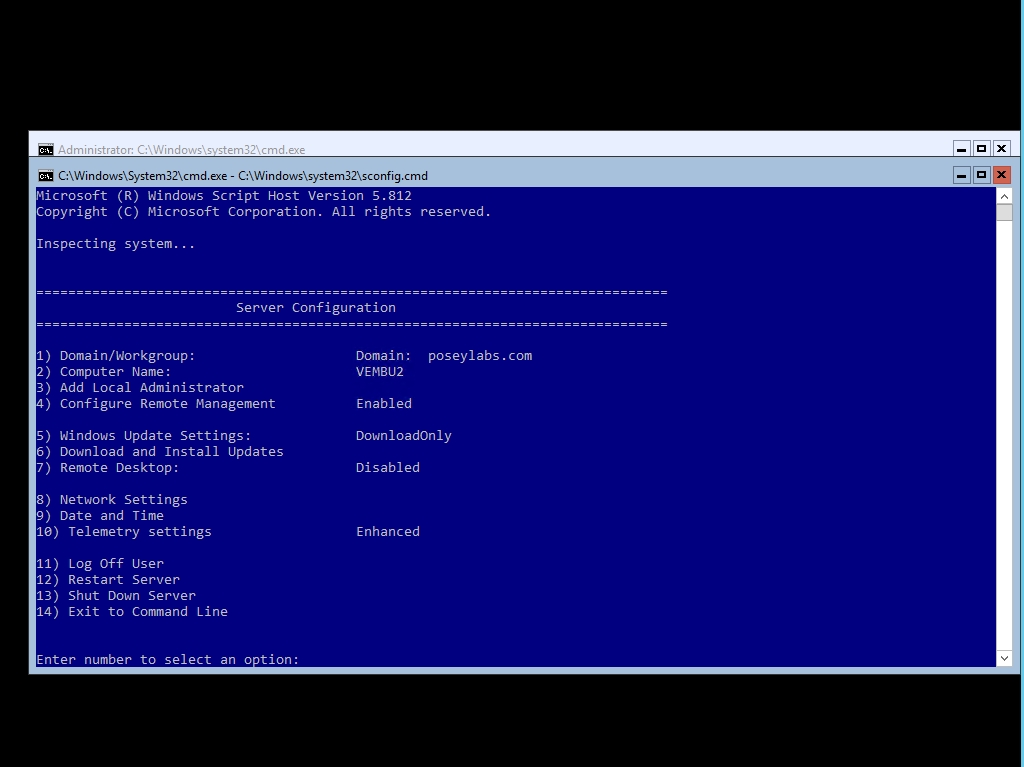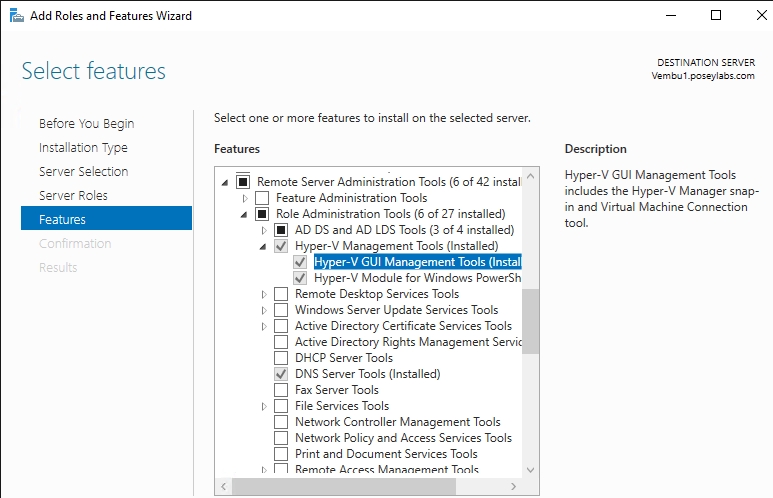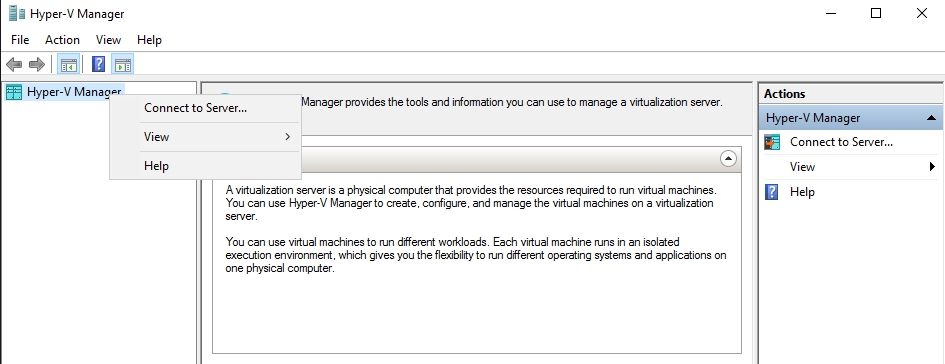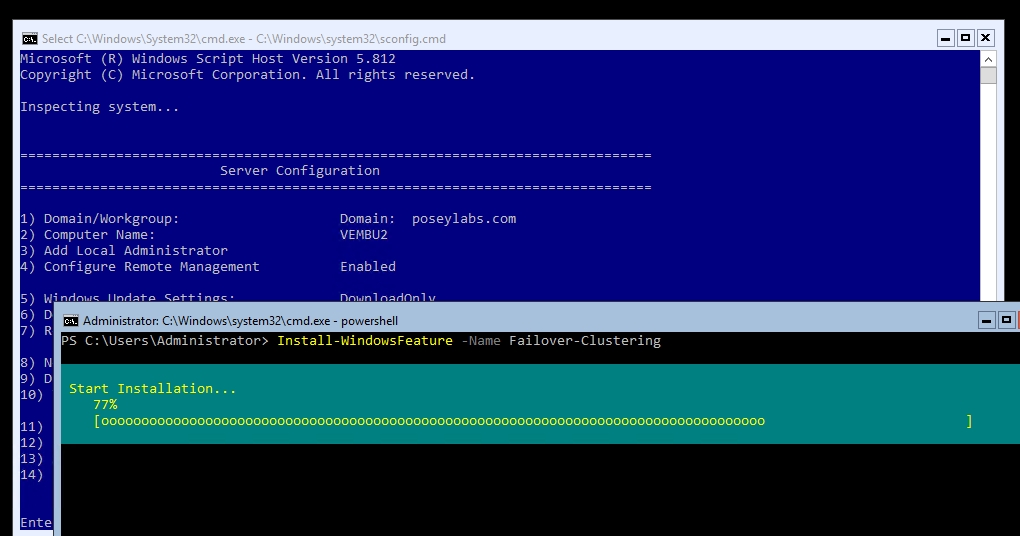Microsoft has long offered a free version of Hyper-V, which is simply known as Hyper-V Server. Even though, Hyper-V Server has received an undeserved reputation for being impractical and difficult to manage. In reality, however, you can do nearly anything with the free Hyper-V Server that you can do with Windows Server Hyper-V role. So let’s take a look at how Hyper-V Server received its reputation, and how you can get around the perceived limitations.
Installing Hyper-V Server couldn’t be simpler. Just download the binaries from Microsoft and run Setup. You can see what the Hyper-V Server 2016 interface looks like in Figure A. As you can see in the figure, the interface is really sparse. It includes a simple text-based menu system that you can use to configure the server’s network interface, and there is also a Command Prompt window.
Figure A

This is the Hyper-V Server interface.
Admittedly, this interface has discouraged a lot of people from using Hyper-V Server. After all, there are no menu options for managing virtual machines, so it is easy to assume that your only option is to use the Command Prompt window to launch PowerShell, and then use a series of PowerShell cmdlets to create and manage Hyper-V virtual machines. However, all is not as it appears.
Unfortunately, you can’t use the Command Prompt window to manually launch the Hyper-V Manager. Likewise, Microsoft has disabled the option to install a GUI interface by using the Install-WindowsFeature Server-GUI-Shell command. What you can do, however, is to manage your Hyper-V Server remotely.
You can manage Hyper-V Server by running the Hyper-V Manager on another Windows Server, or even on a Windows 10 machine, and then attaching it to the remote Hyper-V Server. It is worth noting, however, that enabling remote management will be a lot easier if both the Hyper-V Server and the machine from which you will be managing it are domain joined. Otherwise, you will have to attach to the Hyper-V server using the HTTPS protocol, which involves a significant amount of configuration effort. Conversely, the Hyper-V Server’s menu, which was shown in Figure A, contains an option for domain joining the server.
If you plan to manage the Hyper-V Server from another server that is running Windows Server, then you will need to install the Hyper-V Manager on that server. You can complete the installation using PowerShell, but if you prefer to use the GUI, then just open Server Manager and run the Add Roles and Features Wizard. When you get to the Features screen, you can find the Hyper-V Management tools under Remote Server Administration Tools | Role Administration Tools | Hyper-V Management Tools, as shown in Figure B.
Figure B

You can install the Hyper-V Management Tools onto a Windows Server, even if that server is not hosting the Hyper-V role.
Once you have installed the Hyper-V Manager, you can launch it from the Server Manager’s Tools menu. When you open the Hyper-V Manager, it will appear as an empty console. To attach it to your Hyper-V Server, right click on the Hyper-V Manager container, and select the Connect to Server option from the shortcut menu, as shown in Figure C. When prompted, choose the Another Computer option, and then enter the name of your Hyper-V Server. It is worth noting that this dialog box contains a checkbox that you can select if you need to provide an alternate set of credentials. Upon clicking OK, you will be connected to the remote Hyper-V server. You can use Hyper-V Manager to manage the Hyper-V Server in the same way as you would manage any other Hyper-V environment. You can see what this looks like in Figure D.
Figure C

Right-click on the Hyper-V Manager container, and select the Connect to Server option from the shortcut menu.
Figure D

You can manage the Hyper-V Server using Hyper-V Manager.
Of course, gaining access to a more practical management interface is really only the first step to making Hyper-V Server practical. In reality, there are two more things that you need to do.
First, it is a good idea to cluster your Hyper-V Server deployment. Otherwise, all of your virtual machines will drop offline if the Hyper-V Server were to fail. Although the interface does not make it obvious, Hyper-V Server fully supports the use of failover clustering. You can run the Failover Cluster Manager remotely from another server, but you will have to use PowerShell to install the Failover Clustering feature onto the Hyper-V Server. The command for doing so is:
Install-WindowsFeature -Name Failover-Clustering
You can see the feature installation process shown in Figure E.
Figure E

You can install the Failover Clustering feature onto Hyper-V Server.
The other thing that you will need to do is to set up a backup for your virtual machines. This too can be done for free. Vembu offers a free version of its Vembu BDR software, and this software fully supports backing up Hyper-V Server.
As you can see, you can deploy and manage a production-grade Hyper-V environment for free. The one caveat that you need to be aware of, is that although Hyper-V Server itself is available for free, you will need to acquire any required licenses for the guest operating systems that you use within Hyper-V virtual machines.
Experience modern data protection with this latest Vembu BDR Suite v.3.9.0 FREE edition. Try the 30 days free trial here: https://www.bdrsuite.com/vembu-bdr-suite-download/
Follow our Twitter and Facebook feeds for new releases, updates, insightful posts and more.



Leave A Comment